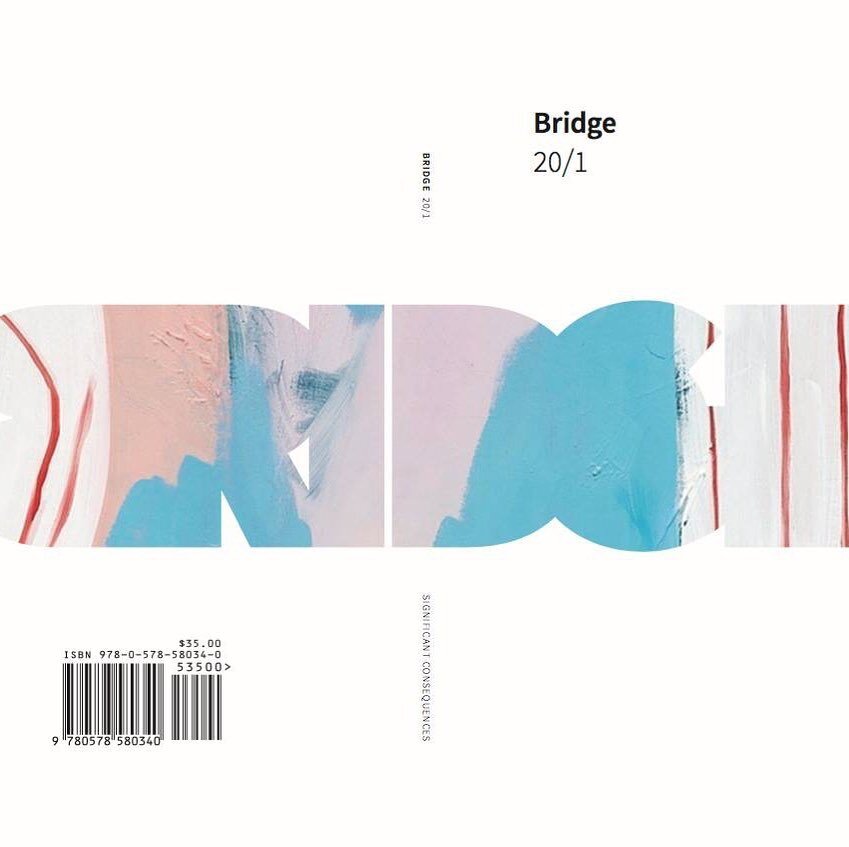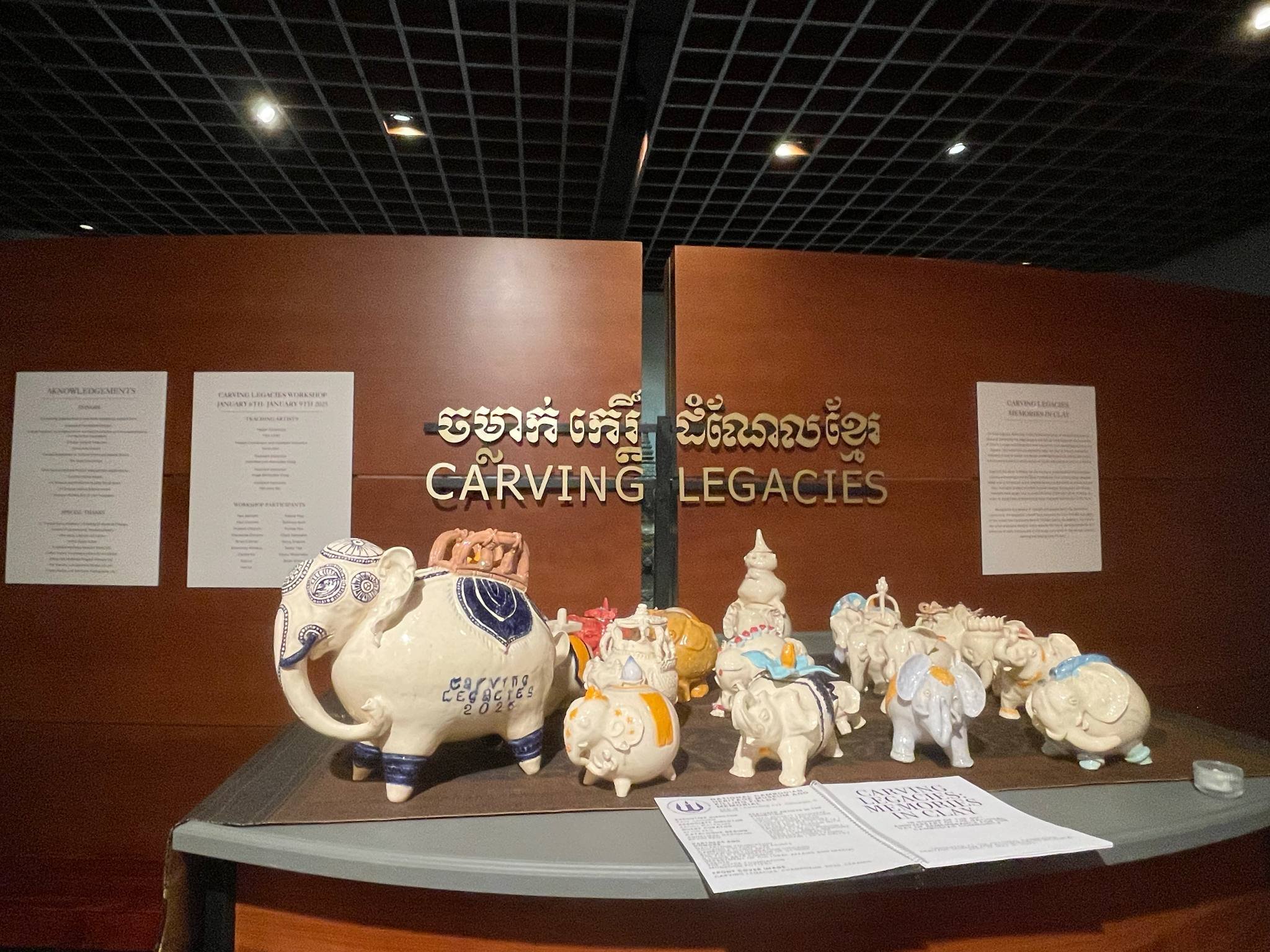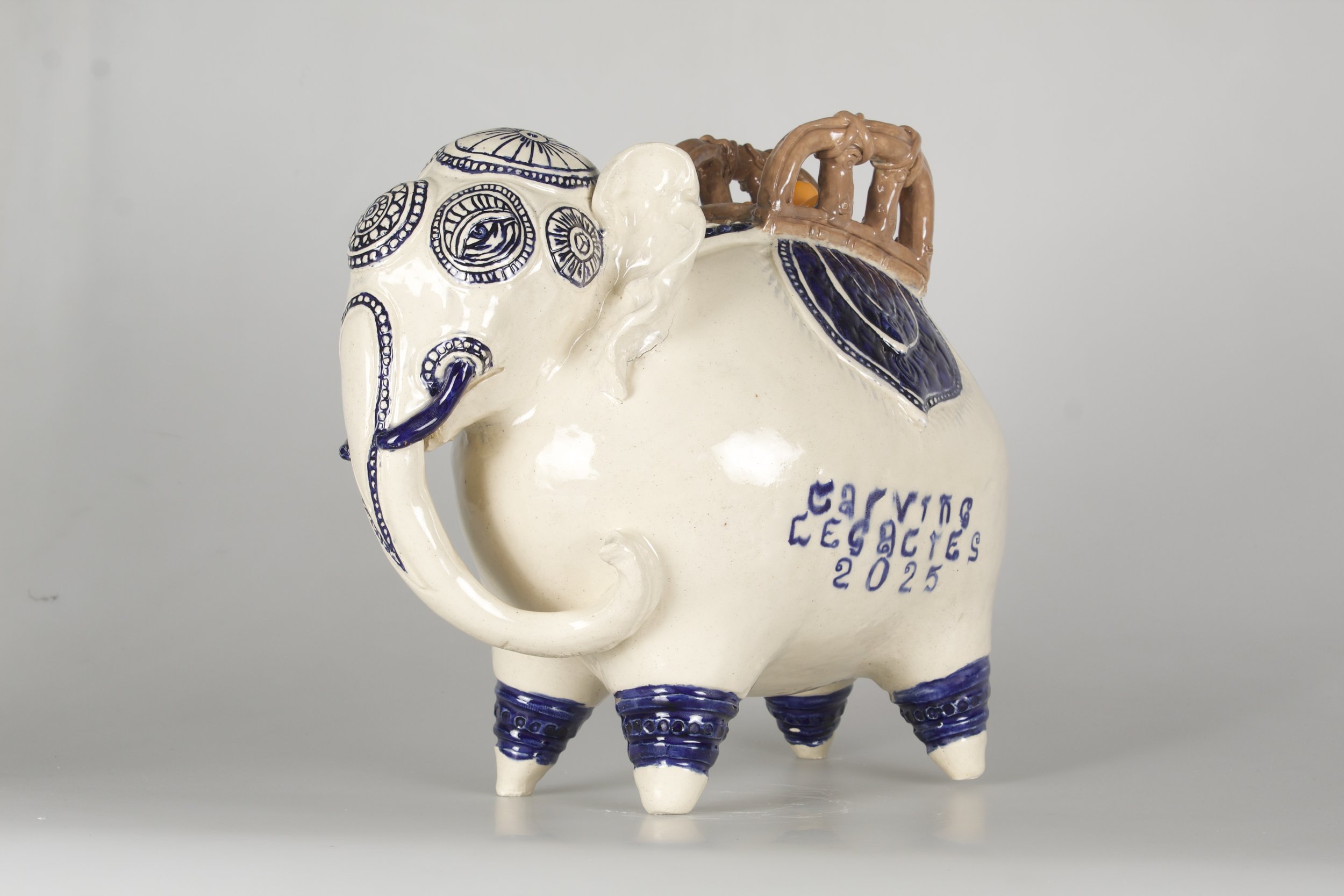REVIEW: “Carving Legacies: Memories in Clay” at the National Cambodian Heritage Museum & Killing Fields Memorial
Carving Legacies: Memories in Clay, installation view, photo by Anneliese Hardman. Image courtesy the National Cambodian Heritage Museum and Killing Fields Memorial.
REVIEW
Carving Legacies: Memories in Clay
National Cambodian Heritage Museum & Killing Fields Memorial
2831 West Lawrence Ave.
Chicago, IL 60625
Apr 17- May 31, 2025
By Anneliese Hardman
April 17, 1975 lives on in infamy as the date of the Khmer Rouge’s takeover of Cambodia’s capitol city, Phnom Penh. This watershed event ushered in the Communist rule of Cambodia which lasted for three grueling years, eight months, and twenty days. During this condensed period, as estimated two to four million people died of starvation, disease or disappearance. Urban centers in Cambodia were emptied and all organized educational, religious, and cultural institutions were abolished. Cambodia was effectively cut off from the rest of world in what has since been called the Cambodian genocide.
The tragedy of this period continues to haunt communities living inside and outside of Cambodia, but it should not be mistaken as a solely defining event. Genocide survivors, as well as second and third generation survivors are also embodiments of bravery and resilience. While committed to sharing stories from this dark history, survivors are also committed to recovering cultural practices, engaging in trauma recovery and moving forward. April 17th remains a significant date for continuing the work of honoring the past but also casting a prospective future. This year marks the fiftieth anniversary of the takeover of Phnom Penh, which catalyzed meetings between Cambodian community members around the world.
Chicago’s metro area is home to over 10,000 Cambodians and hosted several programs in honor of the fiftieth anniversary. Chicago’s National Cambodian Heritage Museum and Killing Fields Memorial is the only museum of its kind located outside of Cambodia. This year’s “Day of Remembrance” programming was a multisensorial array of activities including poetry reading, a moment of silence, a storytelling panel made up of first-and-second-generation survivors, traditional Cambodian musical performances, and Cambodian refreshments donated by two Cambodian restaurants in Chicago, Hermosa and Khmai. Programming also included the exhibition opening of “Carving Legacies: Memories in Clay” which the rest of this review will focus on.
“Carving Legacies: Memories in Clay” is curated by Kevin Keo, a third-generation genocide survivor and ceramicist from Long Beach, California.1 Keo hopes to revitalize Cambodia’s traditional kbach practice. Kbach refers to the variety of ornamentation that decorates objects and architectural surfaces in Cambodia.2 Just last year, Keo traveled to Lowell, MA and trained under one of the oldest surviving kbach artists, Yary Livan. Following this experience, Keo organized a kbach ceramics workshop for the greater Chicago Cambodian community. The workshop was instructed by Yary Livan, two other artists—Angel Bermudez Vong and Vanndearlyn Bermudez Vong—and Keo.
The goal of the workshop was to create ceramic vessels in the shape of elephants. Some of the elephants are hollow inside while others reflect the personalities of their creators. For example, the largest of the ceramic elephants Chamroeun was collaboratively created by Keo, Livan, and the other instructors to hold notes written by workshop participants and other Cambodian community members. In Cambodia, the elephant is a symbol of strength, wisdom, and good luck. One participant described the elephant also as a reminder of their Cambodian ancestors and a surviving relic of Cambodia’s Angkor culture which lasted from the 9th to the 14th century.3 Keo states that Chamroeun and the other elephants were “created to carry the memories of [the Cambodian] community into the future, steadfast, and patiently moving towards a better collective future for the Cambodian people.”4 They proceed into the future with hope and resilience.
Carving Legacies: Memories in Clay, installation view, photo by Kevin Keo. Image courtesy of the curator and the National Cambodian Heritage Museum and Killing Fields Memorial.]
Creating the elephants allowed first-and-second-and-third-generation survivors to spend time together, sharing primary and postmemory stories about survival and hope for the future. Comparative literature professor Marianne Hirsch describes the postmemory generation as those who came of age after a period of war but still feel the affects of trauma and loss suffered by those of who lived through the initial experience.5 Ethnic studies scholar, Long T. Bui explains that one way to recover from initial and postmemory trauma is to “use creative projects specifically to absorb and articulate aftershocks.6 Art provides a different kind of history lesson that “asks viewers to reflect on those who have been ignored in space and time.”7 In the same way, “Carving Legacies: Memories in Clay” is a reminder of the Cambodian experience of living through the genocide and recovering. It is also one part of the process of using art as a way of healing from past trauma.
Carving Legacies workshop, workshop, photo by National Cambodian Heritage Museum and Killing Fields Memorial. Image courtesy of the National Cambodian Heritage Museum and Killing Fields Memorial.]
Organized as a group of twenty-one elephants all displayed together on a single pedestal against a wall, the elephants were a little hard to examine in detail or to view from multiple angels. The installation of elephants is a small exhibition positioned in a free space between the Killing Fields Memorial and museum exhibitions about the genocide. It acts as an-in-between space bridging genocide memories with memorial healing. To provide more information about the elephants and their creators, a catalogue was printed and positioned in front of the display. Each page of the catalogue included larger images of each elephant placed next to an artist statement submitted by each workshop participant. These artist statements reveal feelings, inspirations or other memories that were stimulated during the creation process of each elephant.
Carving Legacies: Memories in Clay, installation view, photo by Anneliese Hardman. Image courtesy of the National Cambodian Heritage Museum and Killing Fields Memorial.]
Despite its condensed nature, the exhibition effectively captures and embodies the collective will and legacy of the Cambodian community here in Chicago. Led by the elephant, Chamroeun, the other steadily marching elephants carry physically and metaphorically the stories and memories of their creators and of the larger community. In the words of Keo, the elephants symbolize the continued learning and healing of the greater Cambodian community from past genocide.
Anneliese Hardman is a curator, lecturer, and museum enthusiast specializing in Southeast Asian art histories. Currently, she is pursuing her PhD in Art History at the University of Illinois Chicago with a focus on contemporary Cambodian art. Her dissertation project explores art that reflects relational changes of Southeast Asian environments and culture. You can find her other publications on Art & Market, Athanor, and Fwd: Museum Journal.
FOOTNOTES
1 Keo is currently a second year Museum Studies MA student at the University of Illinois Chicago and this show was organized in partial fulfilment of his MA thesis project.
2 Keo is currently a second year Museum Studies MA student at the University of Illinois Chicago and this show was organized in partial fulfilment of his MA thesis project.
3 Kevin Keo, Carving Legacies: Memories in Clay, exh. cat. (National Cambodian Heritage Museum and Killing Fields Memorial, 2025), 17.
4 Keo, 8.
5 Marianne Hirsch, The Generation of Postmemory: Writing and Visual Culture After the Holocaust (New York, New York: Columbia University Press, 2012), 103.
6 Long Bui, “The Refugee Repertoire: Performing and Staging the Postmemories of Violence,” MELUS 41, no. 3 (2006): 113.
7 Bui, 116.
Like what you’re reading? Consider donating a few dollars to our writer’s fund and help us keep publishing every Monday.





